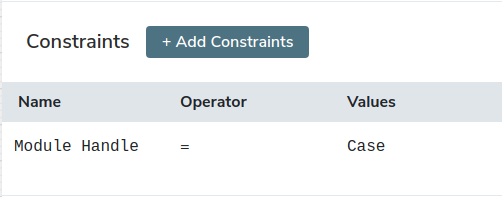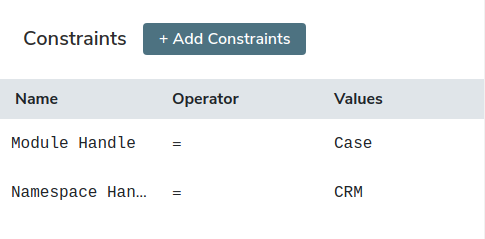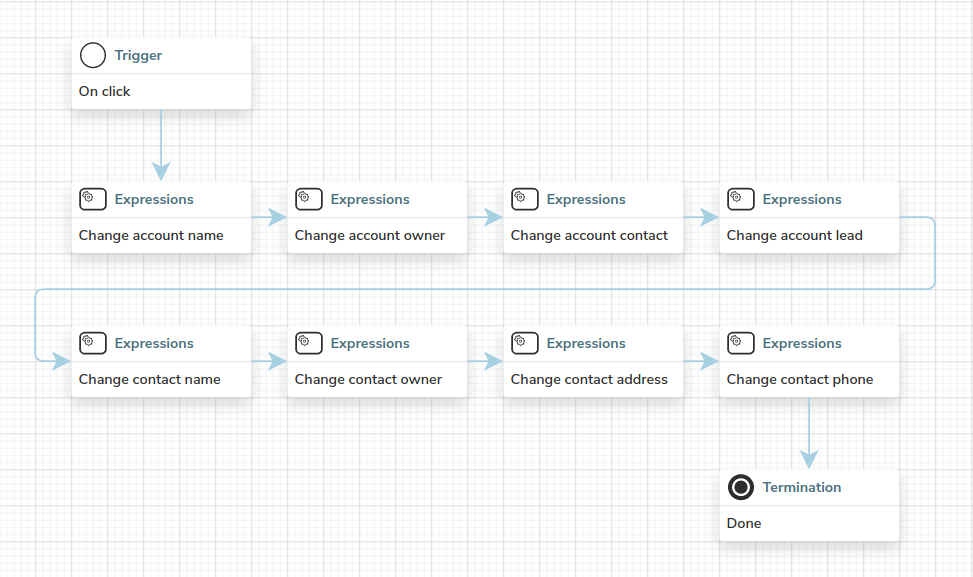Best Practices
Define as many trigger constraints as sanity allows
When you click on the configuration icon in the header of the trigger, you see that it is possible to define multiple trigger constraints.
When defining a "loose trigger" you can run into a situation where some events may trigger the workflow even though they shouldn’t.
An example of this is the case module in our CRM and in our Case Management.

If the case was created in the CRM or in the Case Management, it causes the workflow to execute regardless.
To fix this edge-case, you can define an extra constraint that checks the namespace. See the example below.

One expression step may have multiple expressions
When you click on the configuration icon in the header of the expression step, you see that you can add multiple expressions.
Use this to reduce the number of expression steps, but don’t go overboard. If you wish to change the values of a contact and an account record, define only two expression steps where each focuses only on one record.

The above could easily be rewritten into the below form.

Most iterators are able to load and process data
Item iterators that work with system resources (e.g. Corteza Low Code records, system users and roles) can both fetch and process the data.
When you need to iterate over external resources (for example, social media posts), you need to fetch those beforehand.
Use handles whenever possible
Most resources allow you to define a user-friendly identifier next to the system generated identifier (a handle or a slug in case of a namespace).
These identifiers make it easier to write workflows that work across different instances where the identifier may not be the same.
Coherency is also increased; it’s easier to read lead as an identifier to the lead module instead of 12897612987021.